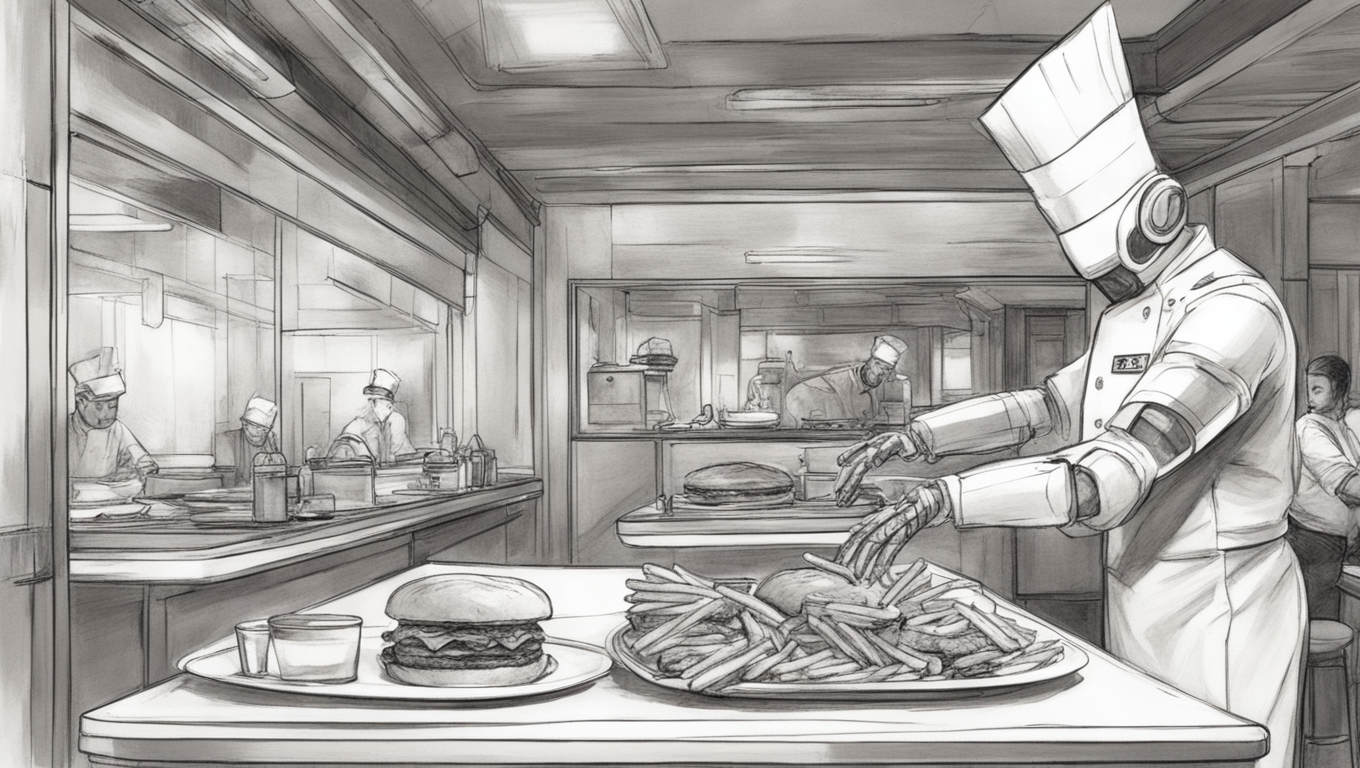In a world where technology continues to push the boundaries of what we thought was possible, the revolution in fast food is well underway. CaliExpress, the world’s first completely autonomous, AI-powered eatery, has opened its doors in Pasadena, California. This groundbreaking restaurant, which offers customers burgers and fries, has caused a stir in the culinary world.
CaliExpress is the result of a collaboration between Cali Group, Miso Robotics, and PopID. Miso Robotics, known for launching the world’s first AI-powered fry station, has once again pushed the envelope by incorporating their cutting-edge technology into the kitchen of CaliExpress. With the addition of PopID, a tech company utilizing biometrics for ordering, this collaboration signifies a significant milestone in the integration of AI and robotics in the food service industry.
Videos of the robots in action inside the restaurant have surfaced, leaving people in awe of this new level of automation. A News Nation reporter commented on the futuristic scene, saying, “This is like a whole new level of robot takeover inside restaurants. It’s why much of the service workforce could soon become obsolete.” While the rise of robots in the fast food industry has been an ongoing trend, CaliExpress takes it a step further by offering a fully autonomous dining experience.
In 2020, Breitbart News reported on burger-flipping robots that were revolutionizing the food service industry. These robots could work for restaurants at an hourly rate of just $3, making them an attractive option for businesses looking to cut costs. Chipotle also joined the AI revolution in 2022 when they introduced an AI robot called Chippy, capable of making tortilla chips.
Miso Robotics, the company behind Chippy, has been at the forefront of developing AI-powered robots for various applications. In addition to tortilla chips, their Flippy burger-flipping robots have been implemented at over 100 White Castle locations. Miso Robotics' board member, John Miller, emphasized the significance of this technological integration, stating, “The marriage of these various technologies to create the most autonomous restaurant in the world is the culmination of years of research, development, and investment in a family of revolutionary companies.”
While the advancements in the fast food industry are impressive, it’s important to note that the impact of AI and robotics is not limited to food preparation. In July 2022, Breitbart News reported on a robot developed in California that was capable of offering faster and more affordable manicures. The Clockwork “Mini-cure” uses 3D cameras to assess a person’s nails, and its AI then paints them, providing a seamless and efficient manicure experience.
The rise of AI-powered robots in various industries, including fast food and beauty services, is a testament to the ingenuity and progress of technology. As we witness these innovations firsthand, it’s clear that we are entering a new era of automation and convenience. While concerns about job displacement may arise, it’s equally important to acknowledge the potential for these advancements to create new opportunities and enhance efficiency in various sectors.
As the world continues to embrace AI and robotics, it’s intriguing to ponder what the future holds. Will we see fully automated restaurants become the norm? Will robots take over other aspects of the service industry? Only time will tell, but one thing is for certain: the future of fast food has arrived, and it’s being served by AI-powered robots.





Use the share button below if you liked it.